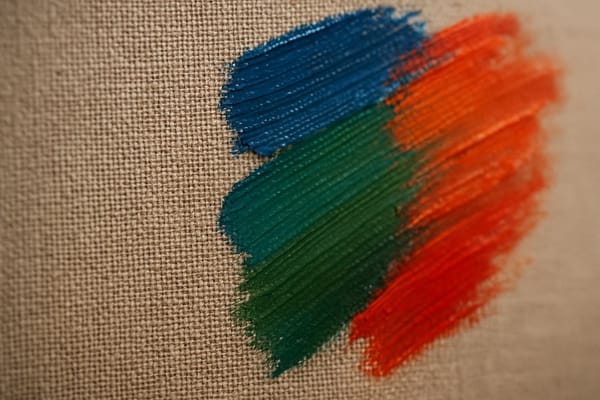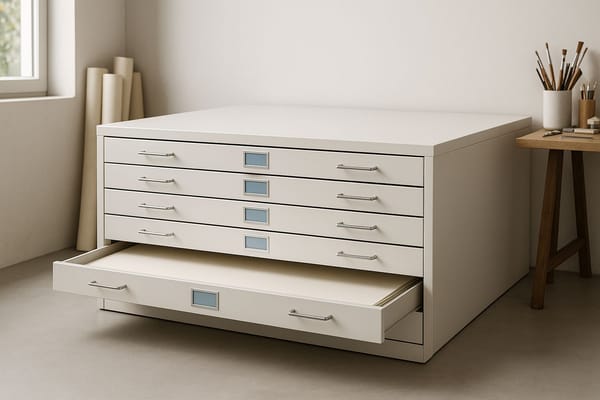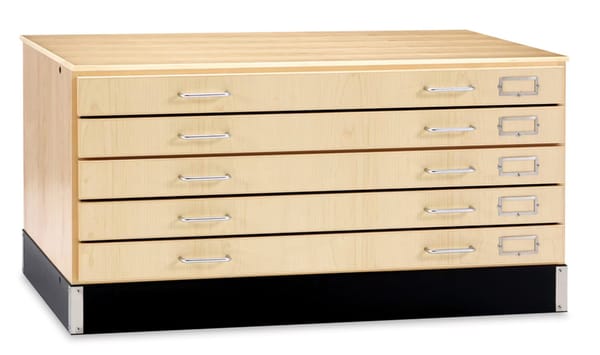Stretched Linen Canvas Explained: Types, Quality, and How to Choose
Learn the real differences between stretched linen canvas types, quality grades, and what to look for before you buy your next canvas.

Linen canvas in extensive stretches holds a special place in most studios for its strength, stability, and the pleasure it offers in the painting experience. This guide explains what stretched linen canvas is, the types available, and how to choose one that supports your own creative habits.
What Is a Stretched Linen Canvas?
A stretched linen canvas is linen fabric pulled firmly over wooden stretcher bars. The fabric is secured at the back, so the front stays smooth and ready for paint. Many artists choose linen because its fibres remain strong, even when exposed to thick layers, humidity changes, or long drying times.
Linen does not respond as much to temperatures as cotton, and therefore the surface will remain foreseeable. This helps you create layers without any concern about sudden tension, sharpness, or sagging. With your support, acting in the same way makes painting easier and even more pleasurable.
Types of Stretched Linen Canvas
Each canvas type changes the way the surface feels, how paint sits on it, and how it responds to your technique. Knowing these differences helps you choose a canvas that suits your painting style instead of fighting it.
By Weave
Fine Weave – detailed work, portraits, glazing
Fine-weave linen has tightly woven threads that create a very smooth surface. This makes it ideal for portraits, delicate edges, and thin layers, such as glazing. The slight texture helps you control soft transitions without visible bumps or interruptions.
Medium Weave – all-purpose painting
Linen medium weave provides a versatile surface suitable for several styles. It is not too rough to remove the paint, but it is not so rough as to distract you. This alternative is ideal for landscapes, still life and daily studies as it allows free and detailed work.
Rough/Heavy Weave – expressive, textured, impasto
Rough-weave linen has a firm, visible texture. You can feel the tooth under your brush or knife, and it adds energy to bold strokes. This surface welcomes thick paint, expressive lines, and palette-knife work without hesitation.
By Primer
The primer creates the first working layer between the linen and your paint. It shapes the overall feeling of the canvas and determines which paints will bond correctly.
Oil-Primed Linen
Oil-ground linen is made with an oil-based ground. It is tactile and easy-going, as oil painting slides smoothly. The colours are not diluted because the primer keeps the paint close to the surface. Linen primed with oil is suitable only for oil paint, since acrylic paint cannot stick to it.
Acrylic-Primed Linen
Acrylic-primed linen uses an acrylic ground, which is more absorbent than a traditional oil ground. It accepts both acrylic and oil paints, giving you greater flexibility. This surface feels slightly softer under the brush and dries faster when you paint with acrylics.
By Frame Depth
The depth of the frame affects both the look and the practicality of your canvas.
Standard/Thin Edge – framing friendly
Standard-depth canvases have a thin profile that fits neatly into most frames. This makes them perfect for artists who prefer traditional framing or want a finished edge hidden inside a frame.
Gallery Wrap/Deep Edge – modern look, no frame needed
Gallery wrap canvases use thicker stretcher bars. The linen often wraps around the sides for a clean, modern appearance. Many artists leave these unframed because they stand well on their own.
How to Choose the Right Stretched Linen Canvas
It is a bit of a bafflement to select a long linen canvas. The alternatives are close to one another but have a slight and significant impact on your painting experience. Considering your style, medium, and working habits, you can narrow down to the most suitable match.
Match Weave to Painting Style
Your painting style usually gives the clearest direction.
- Fine weave works for portraits and delicate edges.
- Medium weave is used in landscapes and general painting.
- Rough weave, heavy paint, and ardent brush.
Choosing the right weave ensures the texture supports your idea rather than distracts from it.
Pick the Right Primer
Primer choice depends primarily on your medium.
- Oil-primed linen works best for oil painting.
- Acrylic-primed linen handles acrylic and oil.
The right primer feels natural when you paint and helps your layers stay stable over time.
Understanding Linen Grades
Not all Stretched linen canvas is the same. The degree of fibre and uniformity of the weave make the different grades.
Belgian linen
Belgian linen is known for high-quality flax fibres and strict weaving standards. Many artists consider it the premium choice because it stays stable for decades.
European flax linen
The European flax linen is also strong and durable. Quality can vary between brands; however, overall, it is a reliable painting surface.
Artist-grade, professional-grade, and premium-grade
These labels help you understand the quality level:
- Artist-grade suits practice pieces, studies, and everyday work.
- Professional-grade is more about weaving/priming for long-term or detailed work.
- Premium-grade is made with superior threads and finished on museum-quality surfaces.
Each grade has different goals, so consider how long you want the painting to last and how you plan to use it.
Canvas Size Considerations
Stretched linen canvas size affects more than composition. It also affects how you move, how you store your work, and how comfortable you feel while painting. Small canvases work well in tight studios or for pieces with careful detail. Large canvases invite significant movements and broad strokes.
When choosing a subject for your painting, you should consider its size. A portrait usually looks natural on a medium-sized canvas because it is not crowded with details. A broad horizon may require a wide landscape format to accommodate panoramic shots. The workspace is essential as well, since you need space to move forward and view the entire surface.
Benefits of Painting on Stretched Linen Canvas
Stretched linen canvas offers many benefits that help both new and experienced artists feel more confident. The surface stays tight longer, handles paint more predictably, and supports your work through many layers.
- Power fibres, which do not fall.
- Stroke-natural texture, which improves brushwork.
- Good overall performance in the long term.
- Since it is more stable in moist conditions compared to cotton.
- Glazing and fine detail. Slick handling.
- Solid support of oil or thick paint.
These qualities create a surface that feels comfortable from the first stroke to the final varnish.
Potential Drawbacks to Consider
- Higher cost than cotton
- Slightly heavier weight
- It may be more challenging to be hand-stretched.
- Limited low-budget options
These drawbacks matter, especially for beginners or large projects, but many artists find the benefits worth the investment.
Best Use Cases for Stretched Linen Canvas
Linen supports many painting styles, though some techniques shine exceptionally well on it. Thinking about your medium and the way you work helps you understand when linen is the best choice.
Oil Painting
Oil painting feels natural on linen because the surface stays stable through slow drying times. Oil-primed linen offers smooth glide, gentle drag, and rich colour. Layers sit clearly on top of each other, which helps you build subtle glazing or deep shadows without sinking into the background.
Acrylic Painting
Acrylic painters can and do use acrylic-primed linen because it is stronger than cotton. The thin layers, scumbling, and dry brushing are favoured for the absorbency. Acrylic-primed linen is flexible, allowing you to use any technique you like.
Mixed Media
Linen works well for mixed media when materials match the primer. It supports charcoal, pencil, thin washes, and even light collage when appropriately applied. If you plan to use very heavy collage or wet techniques, mounting linen on a panel may give you extra stability.
Conclusion
- Stretched linen canvas offers firm, stable, and long-lasting support.
- Weave, primer, and grade all influence how the surface behaves.
- Choosing the right type depends on your style and medium.
- Linen supports both fine detail and expressive paint handling.
- Buying from trusted stores ensures consistent and reliable quality.
FAQs About Stretched Linen Canvas
Is Linen Stronger Than Cotton?
Yes, linen fibres are stronger and more stable than cotton fibres.
Can Acrylic Be Used on Oil-Primed Linen?
No. Acrylic paint should only be used on acrylic-primed linen.
Do I Need to Prime Linen Again Before Painting?
Pre-primed linen is usually ready to use without extra preparation.
Why Is Belgian Linen So Expensive?
It uses high-quality flax fibres and very consistent weaving, which raises production costs.




